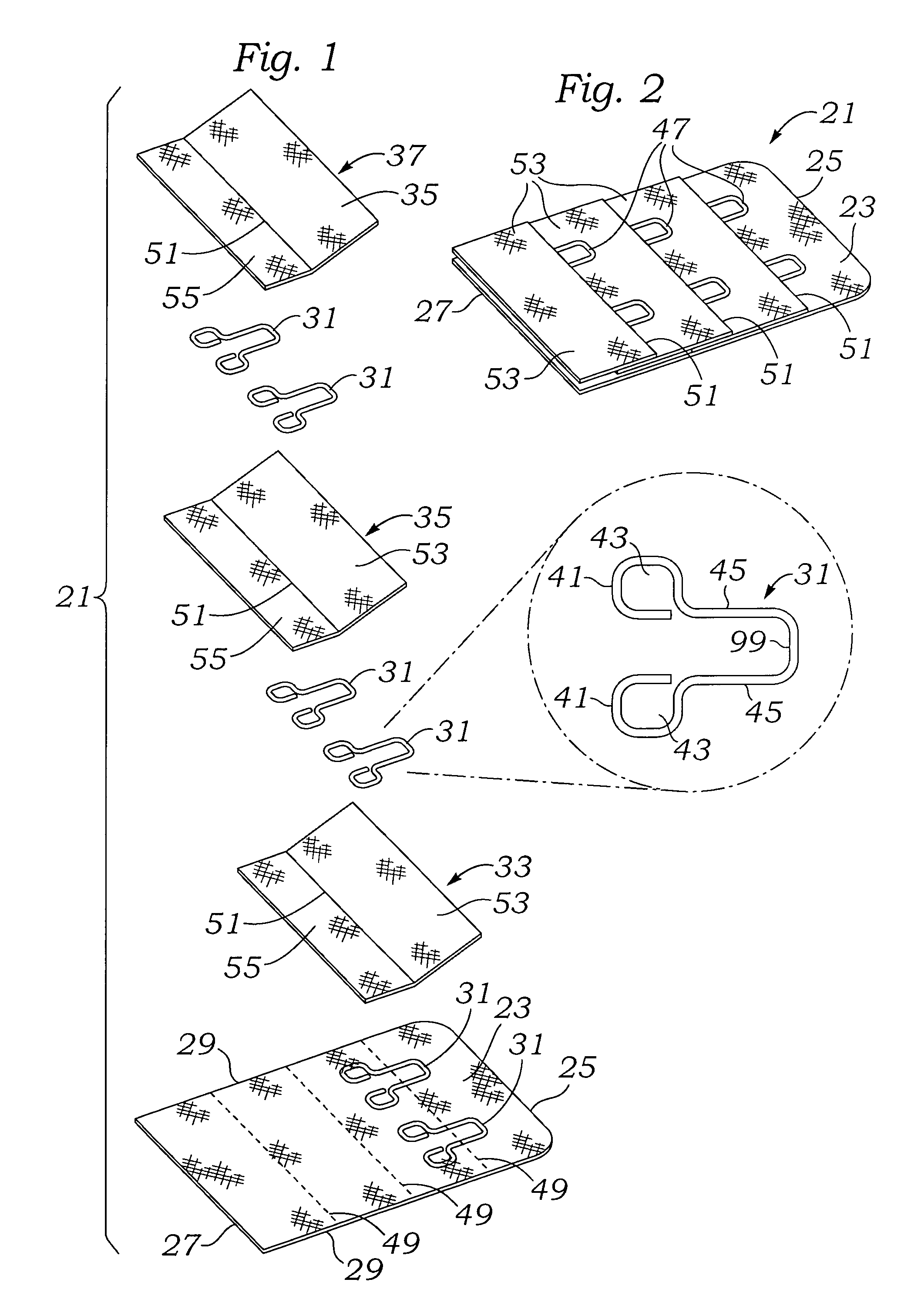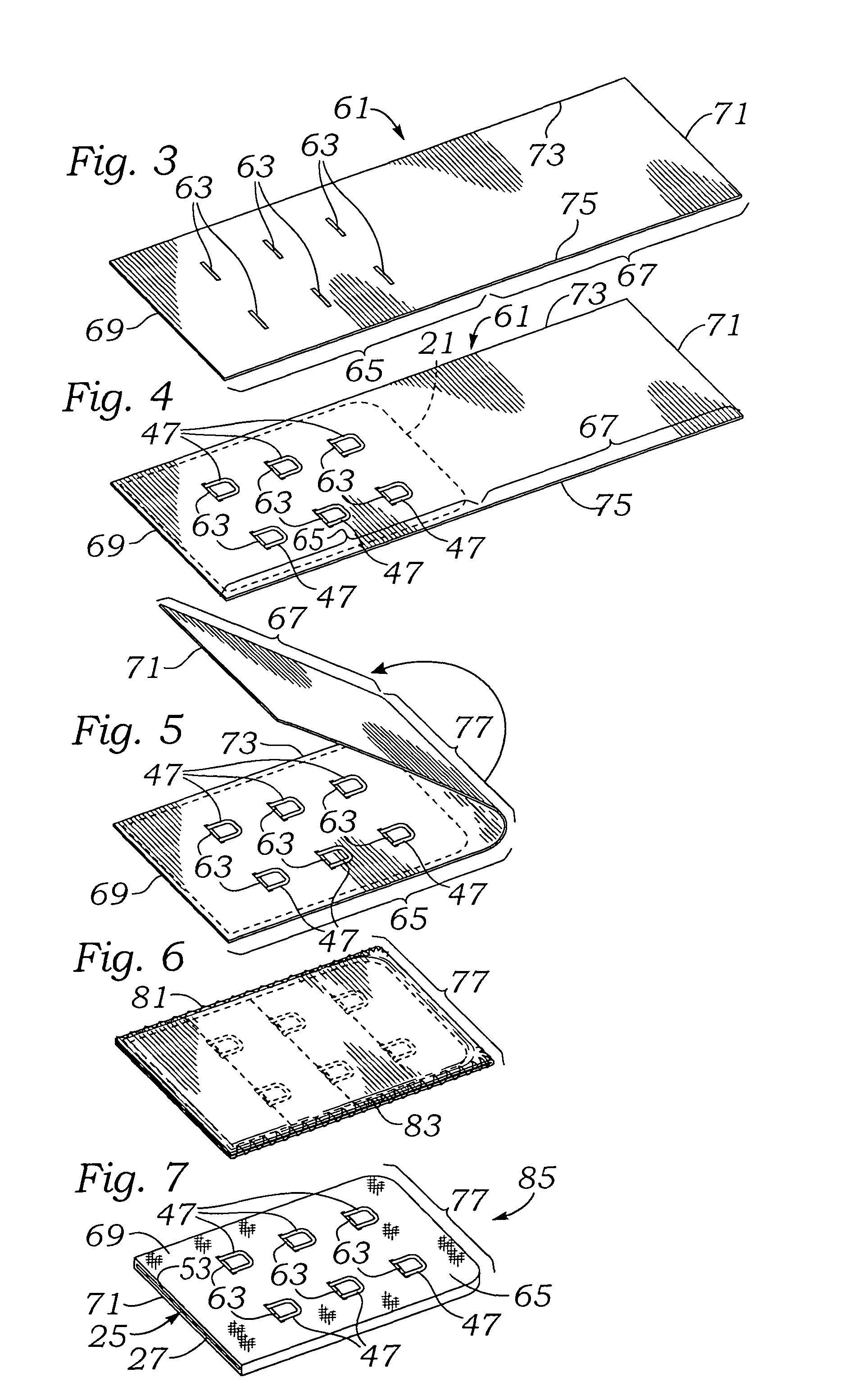Roughness insulated sheath covering
a technology of roughness insulation and sheath covering, which is applied in the direction of snap fasteners, general fasteners, buckles, etc., can solve the problems of significant physical disruption of the underlying fastener, more unwanted abrasion, and the wearer’s “roughness” factor, so as to reduce the amount of time wasted
- Summary
- Abstract
- Description
- Claims
- Application Information
AI Technical Summary
Benefits of technology
Problems solved by technology
Method used
Image
Examples
Embodiment Construction
[0032]Referring to FIG. 1, an exploded perspective view of one possible configuration of an eye loop support structure 21 is shown as having a base layer 23 which can be made of any material depending upon the manner of attachment. Base layer 23 has a trailing end 25 and an attachment end 27, and a pair of side edges 29. The eye loop support structure 21 illustrated for example is formed with a base layer onto which is located a series of female eye loop connectors 31 and folded and sewn layers 33, 35, &37 are attached.
[0033]An expanded view of one possible female eye loop connector 31 is seen to the right side of FIG. 1. The eye loop connector 31 is typically made from a small wire that has been cut and bent to a shape similar to that shown, or it could be any shape. Because the example shown is a sewn example, the shape of FIG. 1 works well with a sewn attachment. The eye loop connector 31 includes a pair of base eyelets 41 which may be formed with each having an opening 43 which ...
PUM
 Login to View More
Login to View More Abstract
Description
Claims
Application Information
 Login to View More
Login to View More - R&D
- Intellectual Property
- Life Sciences
- Materials
- Tech Scout
- Unparalleled Data Quality
- Higher Quality Content
- 60% Fewer Hallucinations
Browse by: Latest US Patents, China's latest patents, Technical Efficacy Thesaurus, Application Domain, Technology Topic, Popular Technical Reports.
© 2025 PatSnap. All rights reserved.Legal|Privacy policy|Modern Slavery Act Transparency Statement|Sitemap|About US| Contact US: help@patsnap.com



